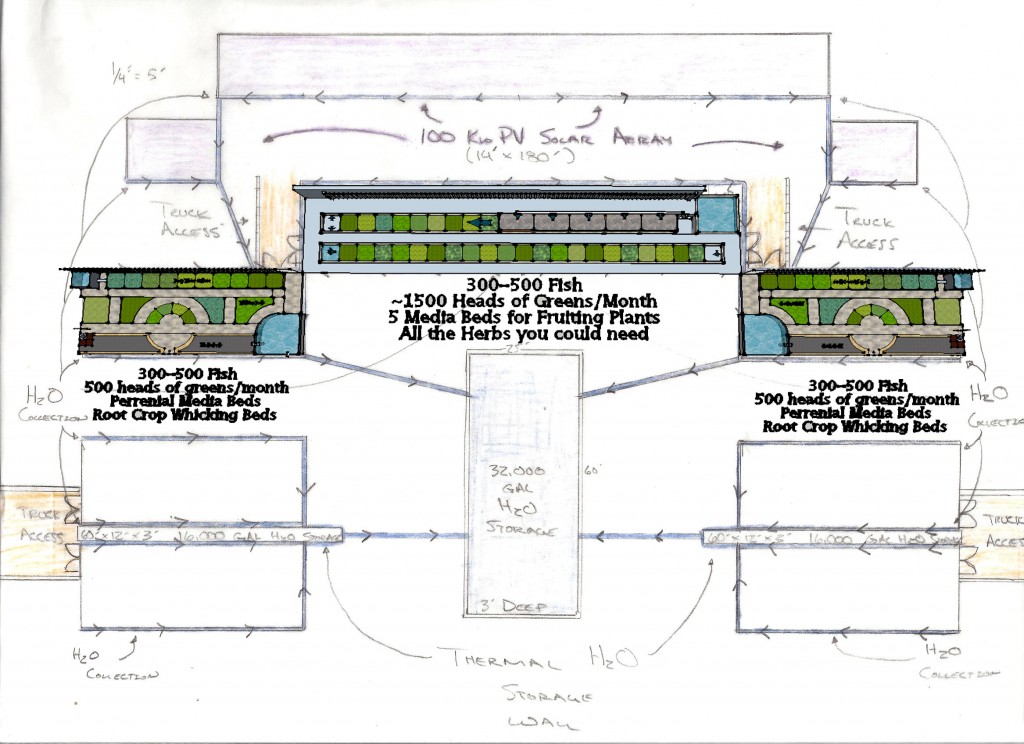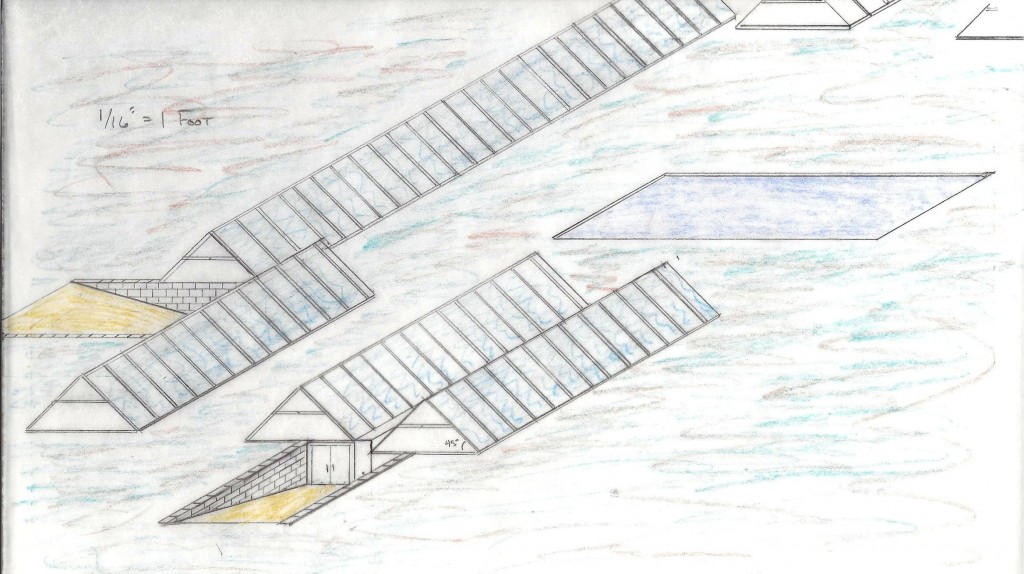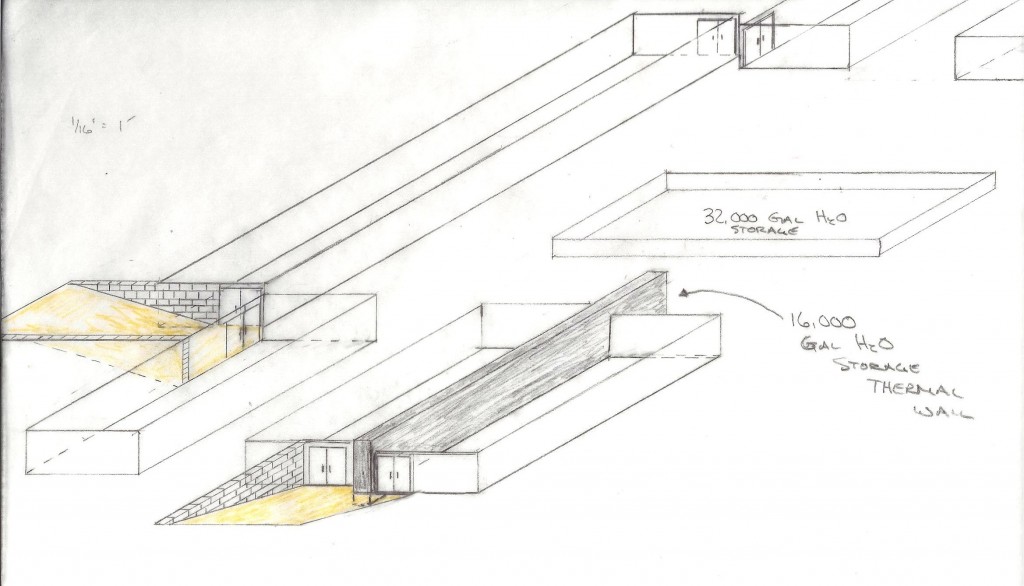Open Source Sustainable Food Systems Update
We’ve been busy with infrastructure design details! Here are the initial layouts and aquaponics and walipini combination designs called aquapinis. The three walipini food production systems we will demonstrate as Phase I of the One Community self-sustainable food production plan are:
- Walipini Greenhouses: These will be used as traditional soil growing areas to grow things we can’t grow in the other greenhouses including trees for year-round production. In support of our open source goals these greenhouses will provide the most affordable and simple option for people to duplicate.
- Large-scale Production Aquapinis: These will be aquapinis purposed for maximum food volume production of the foods we need the most. In support of our open source goals these will demonstrate and share a model for commercial use and impoverished areas most in need of large-scale quality food production utilizing very little water.
- Diversity and Aesthetic Aquapinis: These aquapinis are designed to demonstrate maximum food diversity, space utilization through a combination of growing methods including aquaponics, and provide a small space for just enjoying the environment. In support of our open source goals these combination aquapinis are purposed to provide a food production system that will inspire a person to want to build it in their backyard as a way to produce a volume and diversity of food for all their family and friends (and several additional families) while also creating an aesthetically pleasing place to go and sit in nature and comfortably read a book during the coldest months of winter. As we continue to design these we are exploring a combination of water features, sitting area designs, and other options to make them both functional and beautiful. We are also building these with the long-term intent to demonstrate that we can convert them into walipini permaculture environments once the higher production levels of the aquaponics are no longer needed due to permaculture and the other sustainable food production facilities incorporated into each of the Pods.
For more information and details on our open source food systems integrating aquapini, aquaponics and walipini designs (including links to our complete design notes, food production details, etc.) visit:
CONSULTANTS ON OUR AQUAPONICS DESIGNS
Avery Ellis: Aquaponics Specialist and owner/operator of Integrated Aquaponics
The drawings below are now in the hands of one of our architect consultants:
Douglas Simms Stenhouse: Architect and Water Color Artist (see: transparentwatercolor.com)
This is the layout integrating initial layout drawings with Avery’s sketchup designs. Doug will now be looking at this with an architects eye to improve aesthetics, water catchment and flow, air flow and venting, heat retention and utilization, accessibility, space conservation, etc.
For more information and details on our open source food systems integrating aquapini, aquaponics and walipini designs (including links to our complete design notes, food production details, etc.) visit:




